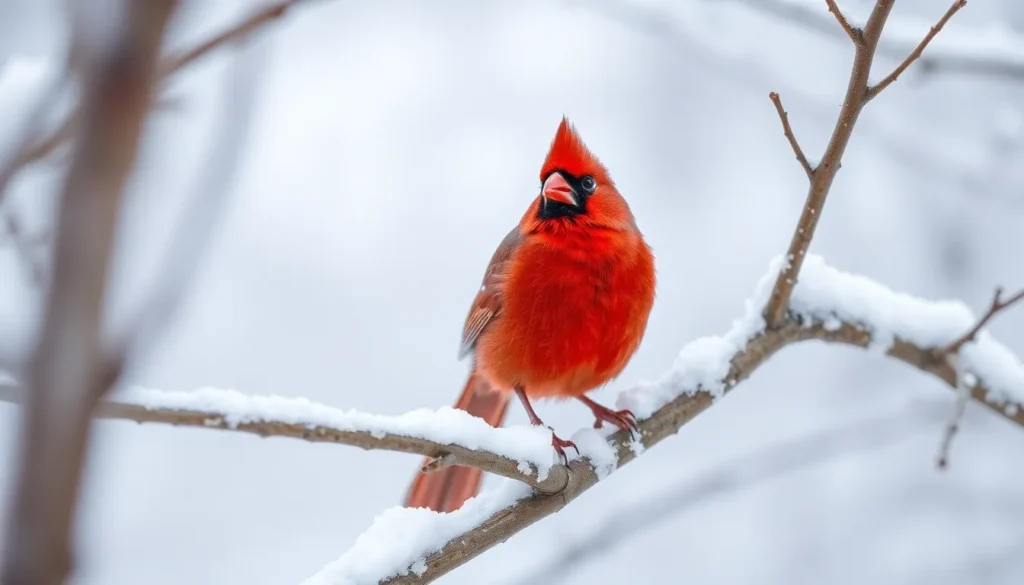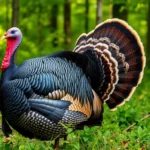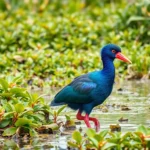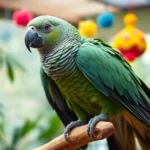When the temperature drops and snow blankets our landscapes we’re often surprised by the vibrant life that continues to thrive in winter’s harsh embrace. Winter birds aren’t just survivors—they’re nature’s most resilient performers putting on spectacular shows right in our backyards.
We’ve all witnessed those magical moments: a brilliant red cardinal against fresh snow or a flock of cheerful chickadees defying the bitter cold. These remarkable creatures have evolved incredible adaptations that allow them to not just endure winter but flourish during the season when most wildlife retreats.
Whether you’re a seasoned birder or someone who’s just beginning to notice the feathered visitors at your window we’re about to explore the intriguing area of winter birds. From their survival strategies to the best ways to attract them to your yard you’ll discover why winter bird watching might just become your new favorite cold-weather activity.
What Makes a Winter Bird Special
Winter birds possess remarkable physiological adaptations that distinguish them from their warm-weather counterparts. These resilient creatures have evolved specialized feathers with increased density, creating multiple air pockets that trap body heat and provide superior insulation compared to standard plumage.
Metabolic efficiency sets winter birds apart through their ability to process high-fat foods rapidly. Cardinals can increase their metabolic rate by 40% during extreme cold snaps, while chickadees store fat reserves equivalent to 10% of their body weight daily. This energy storage system allows them to survive nights when temperatures drop below -20°F.
Counter-current heat exchange systems in their legs prevent frostbite through specialized blood vessel arrangements. Warm arterial blood flows downward while cold venous blood returns upward, maintaining core body temperature even when standing on frozen surfaces for extended periods.
Behavioral adaptations include strategic roosting patterns where multiple birds share enclosed spaces. Bluebirds gather in groups of 15-20 individuals inside nest boxes, while nuthatches wedge themselves into bark crevices to conserve heat collectively.
Foraging strategies become highly specialized during winter months. Woodpeckers expand their diet to include tree sap and insects hibernating under bark, accessing protein sources unavailable to other bird species. Goldfinches target exact seed types with higher oil content, including nyjer and sunflower seeds that provide maximum caloric density.
Visual adaptations help winter birds locate food sources against snow-covered landscapes. Their enhanced color perception allows them to distinguish between viable seeds and empty hulls, while improved depth perception helps navigate through bare tree branches more efficiently than during leaf-covered seasons.
Most Common Winter Birds in North America
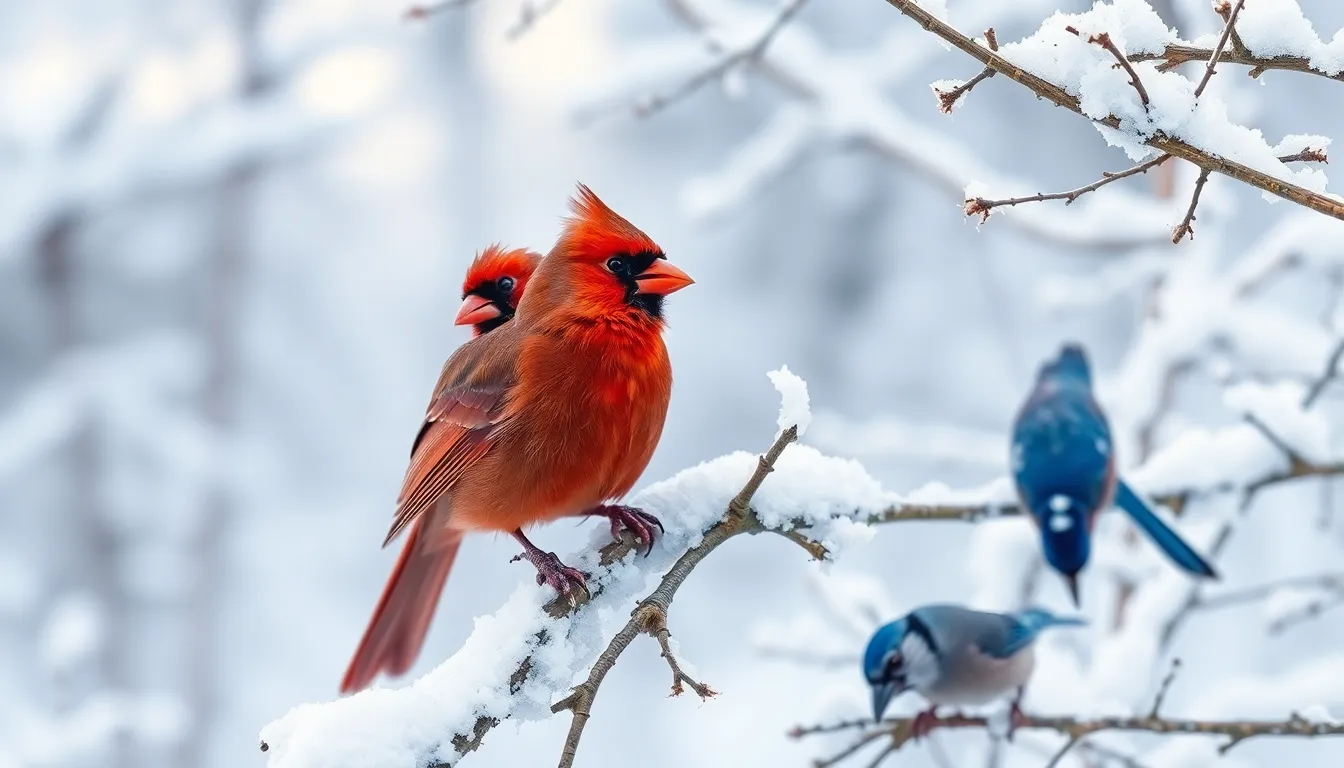
Across North America, certain resilient species consistently brighten our winter landscapes with their active presence and distinctive calls. These winter bird champions showcase remarkable cold weather adaptations while remaining accessible to backyard observers throughout the coldest months.
Cardinals and Blue Jays
Northern Cardinals stand out as winter bird favorites, with males displaying brilliant red plumage that creates striking contrast against snow covered branches. Their thick beaks crack open seeds with ease, while dense feather layers provide exceptional insulation during subzero temperatures. Cardinals frequent backyard feeders filled with sunflower seeds, cracked corn, and safflower seeds.
Blue Jays demonstrate remarkable intelligence during winter months, caching thousands of acorns and nuts in hidden locations throughout their territories. These winter bird survivors remember cache locations with extraordinary accuracy, accessing stored food when fresh sources become scarce. Their loud calls and bold personalities make them easily recognizable visitors at feeding stations stocked with peanuts and suet.
Woodpeckers and Nuthatches
Downy Woodpeckers and Hairy Woodpeckers remain active throughout winter, using specialized tail feathers as braces while excavating insects from tree bark. Their chisel shaped beaks penetrate frozen bark to access dormant larvae and beetle grubs hidden beneath the surface. These winter bird species frequent suet feeders and create roosting cavities in dead tree trunks for overnight warmth.
White breasted Nuthatches display unique foraging behavior, moving headfirst down tree trunks while searching for insects and seeds wedged in bark crevices. Their compact bodies and short tails enable efficient movement across vertical surfaces during winter months. Red breasted Nuthatches prefer coniferous forests, extracting seeds from pine and spruce cones with their pointed bills.
Chickadees and Titmice
Black capped Chickadees represent quintessential winter bird survivors, lowering their body temperature by 20 degrees Fahrenheit during cold nights to conserve energy. These tiny winter birds cache up to 80,000 seeds annually, replacing brain cells each fall to enhance spatial memory for food storage locations. Their acrobatic feeding style allows access to seeds and insects on branch tips that larger birds cannot reach.
Tufted Titmice exhibit similar cold weather resilience, gathering in mixed flocks with chickadees and nuthatches during winter foraging expeditions. Their distinctive crested heads and large dark eyes make identification straightforward at backyard feeding stations. These winter bird species prefer sunflower seeds, suet, and mealworms while maintaining year round territorial boundaries around reliable food sources.
Rare Winter Visitors Worth Watching
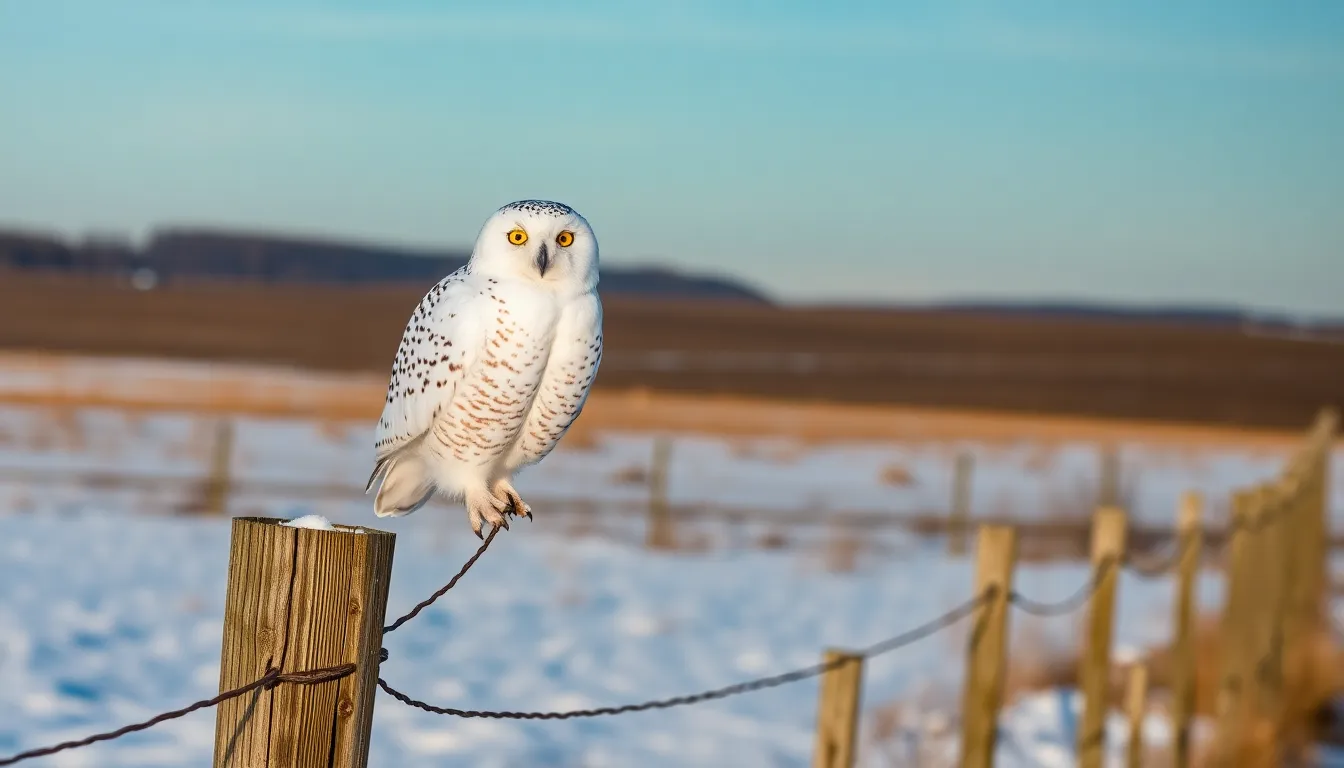
Exceptional winter bird sightings occur when northern species venture beyond their typical ranges. These uncommon visitors create memorable encounters for birders who recognize their unique appearance and behaviors.
Arctic Species Moving South
Snowy Owls make dramatic appearances in northern states during peak winter months when their Arctic prey becomes scarce. These magnificent raptors arrive between November and March, favoring open agricultural fields and coastal areas that resemble their tundra habitat.
Rough-legged Hawks migrate from Alaska and northern Canada to hunt over grasslands and prairies throughout the continental United States. Their distinctive feathered legs and dark belly bands distinguish them from resident hawk species during winter surveys.
Snow Buntings travel in flocks from their Arctic breeding grounds to appear in northern farm fields and shorelines. We identify these striking birds by their white and black plumage patterns that shift seasonally from breeding to winter appearances.
Common Redpolls arrive sporadically from boreal regions when birch and alder seed crops fail in their northern territories. These small finches display bright red caps and show remarkable cold tolerance while feeding on weedy plants in open areas.
Irruptive Species and Their Patterns
Pine Siskins demonstrate classic irruptive behavior when conifer seed production crashes in northern forests every 2-4 years. These nomadic finches suddenly appear at backyard feeders in massive numbers before disappearing completely during non-irruptive seasons.
Evening Grosbeaks exhibit dramatic population swings based on maple seed availability in their boreal habitats. We observe these colorful finches in suburban areas during major irruption years, typically occurring at 10-year intervals when northern food sources become insufficient.
Red-breasted Nuthatches show variable migration patterns tied directly to conifer cone production cycles. Their nasal calls announce their presence at feeders during invasion years when spruce and fir crops fail across Canada.
Purple Finches participate in irregular movements that bring them south of their normal wintering range during certain years. These raspberry-colored birds distinguish themselves from House Finches through their stockier build and different facial patterns during winter identification sessions.
Best Practices for Winter Bird Watching
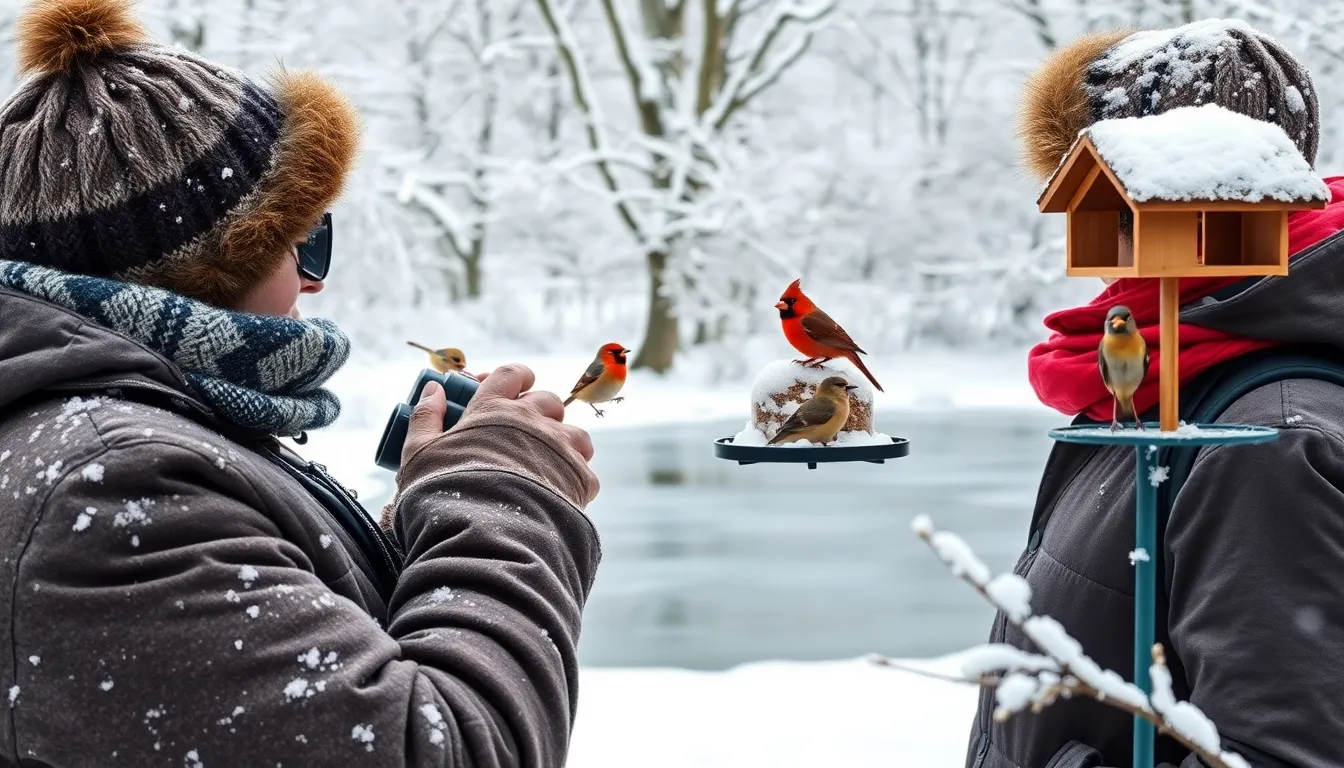
Successful winter bird watching requires exact techniques and equipment that account for cold temperatures and challenging conditions. Proper preparation transforms harsh winter conditions into rewarding birding experiences.
Essential Gear for Cold Weather Birding
Quality binoculars with wide objective lenses (42mm or larger) provide brighter images in low winter light conditions. Anti-fog coatings and waterproof construction protect optics from condensation and snow. Birders benefit from models with close focus capabilities under 8 feet for observing birds at feeders.
Layered clothing systems regulate body temperature during extended outdoor sessions. Base layers made from merino wool or synthetic materials wick moisture away from skin. Insulating middle layers like down or fleece trap warm air close to the body. Waterproof outer shells block wind and precipitation.
Insulated boots with aggressive tread patterns provide traction on icy surfaces. Wool socks maintain warmth even when wet from snow. Hand warmers placed inside gloves keep fingers nimble for operating binoculars and cameras.
Field notebooks benefit from waterproof paper or protective covers. Pencils work better than pens in freezing temperatures since ink can freeze. Smartphone apps like eBird function in cold weather but drain batteries faster.
| Essential Winter Birding Gear | Key Features |
|---|---|
| Binoculars | 42mm+ objective lens, anti-fog coating |
| Base Layer | Merino wool or synthetic moisture-wicking |
| Insulated Boots | Aggressive tread, waterproof construction |
| Hand Warmers | Chemical or rechargeable varieties |
| Field Notebook | Waterproof paper, protective cover |
Prime Locations and Timing
Dawn and dusk provide peak winter birding opportunities when birds actively forage after conserving energy overnight. Cardinals and chickadees visit feeders most frequently between 7:00-9:00 AM and 3:00-5:00 PM.
Sheltered areas near water sources attract concentrated bird populations. Unfrozen streams, ponds with aerators, and heated birdbaths draw species from wide areas. Evergreen forests provide wind protection and roosting sites for woodpeckers and nuthatches.
South-facing slopes warm faster in winter sunlight and offer better viewing conditions. These locations accumulate less snow and provide easier walking surfaces. Birds congregate in these warmer microclimates during midday hours.
Urban parks with diverse habitat types support higher winter bird densities than suburban areas. Mixed woodlands adjacent to open fields create edge habitats favored by many species. Golf courses and cemeteries with mature trees often produce unexpected sightings.
Weather patterns influence bird behavior and visibility significantly. High pressure systems bring clear skies and increased activity levels. Overcast conditions reduce glare from snow and improve photography opportunities. Post-storm periods concentrate birds at reliable food sources.
Attracting Winter Birds to Your Yard
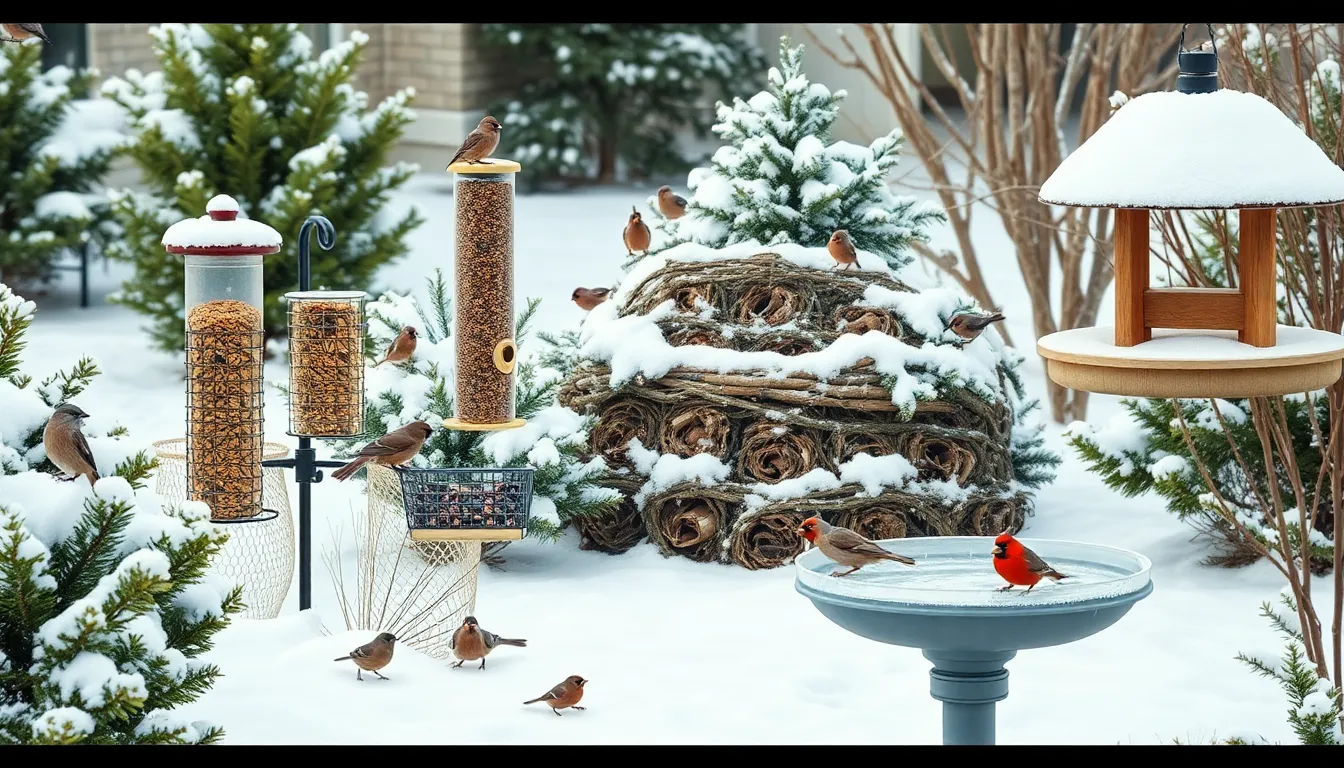
Creating an inviting winter habitat transforms our backyards into bustling bird sanctuaries during the coldest months. Strategic placement of feeders and natural elements draws diverse species that might otherwise pass by unnoticed.
Feeding Strategies That Work
Multiple feeder types positioned at different heights accommodate various winter bird feeding preferences and behaviors. Platform feeders placed 3-5 feet above ground attract ground-dwelling species like juncos and sparrows, while tube feeders suspended 6-8 feet high serve chickadees and nuthatches effectively.
High-energy seed varieties provide essential calories that winter birds require for temperature regulation:
| Seed Type | Target Species | Placement |
|---|---|---|
| Black oil sunflower | Cardinals, chickadees, nuthatches | Tube and platform feeders |
| Nyjer (thistle) | Goldfinches, siskins, redpolls | Specialized thistle feeders |
| Safflower | Cardinals, grosbeaks (squirrel resistant) | Platform feeders |
| White millet | Sparrows, juncos | Ground or platform feeders |
| Peanuts | Woodpeckers, jays, nuthatches | Mesh or platform feeders |
Suet feeders mounted on tree trunks or poles supply crucial fats that woodpeckers, nuthatches, and chickadees depend on during extreme cold spells. Commercial suet cakes containing insects, seeds, and rendered fat offer complete nutrition packages.
Fresh feeders cleaned every 2-3 weeks prevent disease transmission between visiting birds. Positioning feeders within 10-15 feet of natural cover allows birds quick escape routes from predators while maintaining easy access for refilling.
Shelter and Water Sources
Dense evergreen shrubs and brush piles create essential roosting sites where winter birds gather for warmth conservation during harsh weather events. Spruce, pine, and juniper trees offer year-round protection with their thick branch structures and needle coverage.
Natural shelter elements we can establish include:
- Brush piles constructed from pruned branches stacked 4-6 feet high
- Evergreen plantings spaced 8-10 feet apart for windbreak formation
- Nesting boxes with 1.25-inch entrance holes for cavity-dwelling species
- Dense shrub borders featuring native berry-producing plants
Moving water sources remain accessible when temperatures drop below freezing through heated birdbaths or water heaters designed for outdoor use. Shallow basins 1-2 inches deep accommodate small birds safely, while rocks or sticks provide landing platforms.
Dripping water creates audible attraction that draws birds from considerable distances, even during snowstorms when other water sources freeze solid. Solar-powered water heaters maintain liquid water down to temperatures of 20°F without requiring electrical connections.
Strategic placement of water features within 15-20 feet of feeders creates convenient activity centers where birds can drink, bathe, and feed efficiently. Regular cleaning prevents ice buildup and maintains sanitary conditions throughout winter months.
Winter Bird Photography Tips
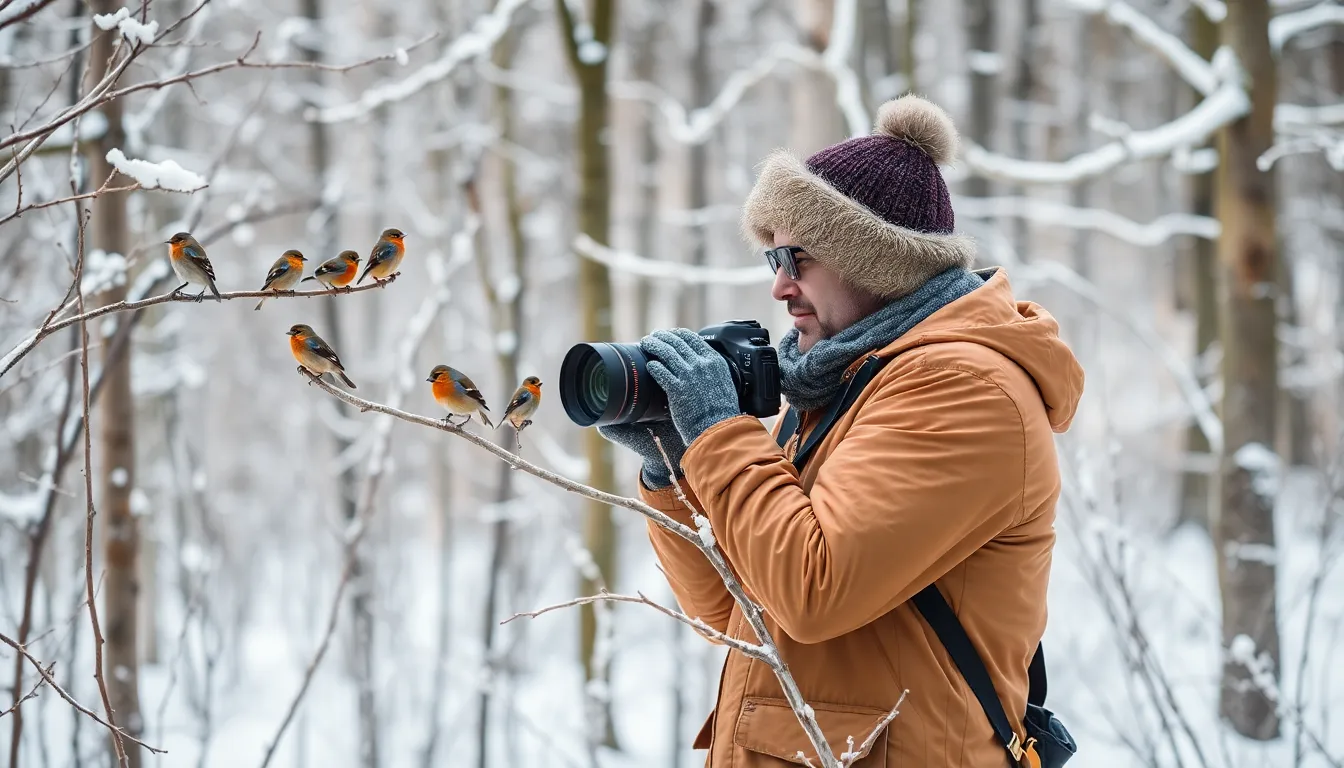
Winter bird photography requires specialized techniques to capture these resilient creatures in their cold weather habitat. Our camera equipment performs differently in freezing temperatures, with batteries draining faster and LCD screens becoming sluggish below 32°F.
Essential Camera Settings for Cold Weather
Low light conditions during winter months demand exact exposure adjustments for optimal winter bird images. We recommend using ISO settings between 800-3200 to maintain acceptable noise levels while achieving proper exposure. Shutter speeds of 1/500th second or faster freeze wing movement and eliminate motion blur from active birds.
Aperture settings between f/5.6 and f/8 provide sufficient depth of field while maintaining sharp focus on bird subjects. Manual focus becomes crucial when autofocus systems struggle against snow-covered backgrounds or in dim lighting conditions.
Weather Protection for Photography Equipment
Camera bodies and lenses require protection from moisture and temperature extremes during winter birding sessions. Condensation forms rapidly when bringing cold equipment indoors, potentially damaging sensitive electronics inside camera mechanisms.
We store cameras in sealed plastic bags before transitioning between temperature zones, allowing gradual temperature adjustment without moisture buildup. Lens hoods prevent snow accumulation on front elements while maintaining image quality throughout shooting sessions.
Optimal Lighting Conditions
Golden hour lighting occurs later in winter months, extending from 7:30 AM to 9:00 AM in northern regions during December and January. Overcast skies create even illumination that eliminates harsh shadows on bird plumage while providing natural diffusion for portrait photography.
Backlighting through snow crystals produces dramatic silhouettes of winter birds perched on bare branches. Side lighting reveals texture details in feathers while creating dimensional depth in bird photography compositions.
Composition Techniques for Winter Scenes
Snow-covered landscapes provide natural negative space that isolates bird subjects from cluttered backgrounds. We position ourselves to capture birds against contrasting elements such as dark tree trunks or evergreen foliage for visual separation.
Rule of thirds placement works effectively with winter bird subjects, positioning active birds in upper or lower thirds of the frame. Leading lines from fallen logs or fence posts guide viewers’ eyes toward bird subjects while creating ever-changing compositions.
Behavioral Timing for Action Shots
Early morning hours between 6:00 AM and 8:00 AM produce peak feeding activity among winter bird species. Cardinals and blue jays exhibit predictable patterns at backyard feeders, returning every 15-20 minutes during active feeding periods.
Woodpecker species demonstrate rhythmic foraging behaviors on dead tree trunks, creating opportunities for capturing drilling sequences. We observe these patterns for 10-15 minutes before positioning cameras for anticipated action shots.
Focus Techniques in Challenging Conditions
Single point autofocus mode provides precise control when tracking moving birds against complex winter backgrounds. Continuous autofocus (AI Servo/AF-C) maintains sharp focus on birds in flight or during active foraging behaviors.
Back button focus separates focusing from shutter release, allowing independent control of exposure timing and focus adjustment. This technique proves invaluable when photographing birds that move unpredictably between branches or feeding stations.
Conservation Challenges for Winter Birds
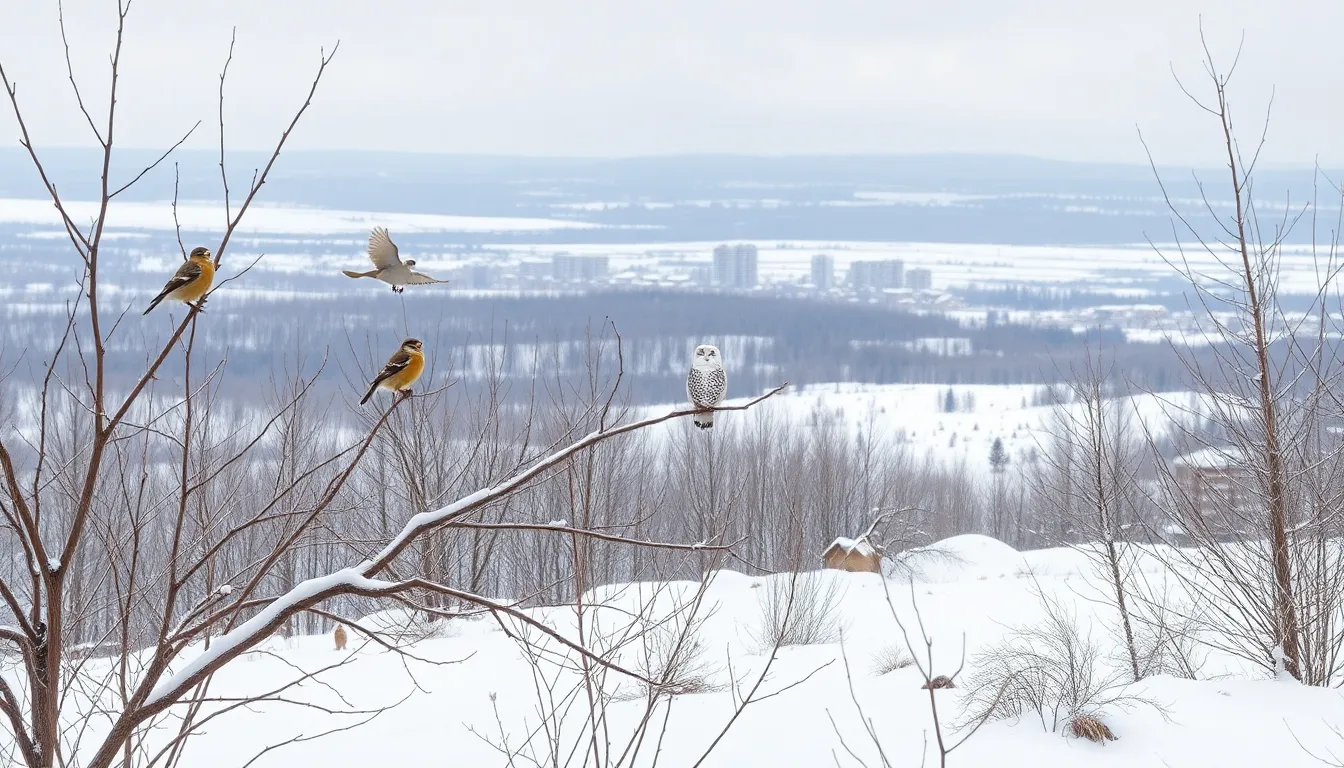
Conservation threats intensify during winter months as birds face compounding pressures from habitat loss and extreme weather events. Climate change disrupts traditional migration patterns and alters the timing of food availability, forcing species like Evening Grosbeaks to travel further distances between viable habitats. Urban development fragments crucial winter refuges, leaving birds with fewer safe spaces to roost and forage during harsh conditions.
Habitat Loss and Fragmentation
Winter habitat destruction affects bird populations more severely than summer breeding ground losses. Development projects eliminate mature forests where species such as White-breasted Nuthatches cache food supplies for survival. Agricultural expansion reduces brushy field edges that provide critical shelter for sparrows and finches during blizzards.
Forest management practices remove dead trees that woodpeckers depend on for insect foraging and cavity nesting. Wetland drainage eliminates water sources essential for winter bird survival, particularly affecting waterfowl populations that rely on unfrozen streams and ponds.
Climate Change Impacts
Temperature fluctuations create ice storms that coat food sources with impenetrable barriers, preventing birds from accessing seeds and insects. Warmer winter temperatures cause earlier spring melts followed by unexpected freezes, destroying emerging food supplies when birds most need energy reserves.
Precipitation patterns shift dramatically, with increased snowfall in some regions burying ground-feeding birds’ food sources for extended periods. Drought conditions in other areas eliminate the berry crops and seed production that sustain winter bird populations.
Species distribution ranges shift northward as average temperatures rise, forcing Arctic birds like Snowy Owls into smaller territories with increased competition for prey. Traditional irruptive species lose their predictable food cycles as boreal forests experience irregular cone production patterns.
Human-Related Threats
Window strikes increase during winter months as birds seek warmth near heated buildings and mistake reflective surfaces for open flight paths. Commercial lighting systems disorient migrating birds, causing fatal collisions with structures during their nighttime movements.
Pesticide applications on winter crops reduce insect populations that birds depend on for protein sources. Road salt contamination affects seed viability in roadside areas where birds typically forage during snow cover periods.
Cat predation intensifies as outdoor cats concentrate around bird feeding stations, creating deadly zones where winter-stressed birds become easy targets.
Conservation Answers in Action
Protected area establishment focuses on creating winter habitat corridors that connect fragmented forest patches. Organizations like the National Audubon Society carry out climate-smart conservation strategies that anticipate future habitat shifts and establish refuges in projected range areas.
Native plant restoration projects emphasize species that produce winter seed crops and berries, such as elderberry and sumac, providing sustainable food sources throughout cold months. Community-based monitoring programs track winter bird populations to identify declining species before critical thresholds occur.
Building design modifications reduce bird strikes through specialized glass installations and strategic lighting placement. Urban planning initiatives incorporate green spaces that serve as winter bird refuges within developed areas.
Research partnerships between universities and conservation groups develop innovative answers such as heated nest boxes for cavity-nesting species and artificial roost sites that protect birds from extreme weather events.
Conclusion
Winter birding offers us an extraordinary opportunity to witness nature’s remarkable adaptability and resilience. These feathered survivors transform the coldest months into a season of discovery and wonder.
By understanding their behaviors implementing proper techniques and creating welcoming backyard environments we can enjoy meaningful connections with winter birds while supporting their survival. Every feeder we maintain and every conservation effort we support makes a tangible difference.
The magic of winter birding lies not just in the spectacular sightings but in the deeper appreciation we gain for these incredible creatures. They remind us that even in the harshest conditions life finds a way to thrive and bring beauty to our industry.
Frequently Asked Questions
What physiological adaptations help birds survive winter?
Winter birds have specialized feathers with down insulation that traps warm air close to their bodies. They develop counter-current heat exchange systems in their legs and beaks to prevent frostbite. Their metabolic efficiency increases, allowing them to generate more body heat from food sources while conserving energy through strategic roosting behaviors.
Which winter birds are most commonly seen at backyard feeders?
Northern Cardinals, Blue Jays, Black-capped Chickadees, and Tufted Titmice are frequent backyard visitors. Woodpeckers like Downy and Hairy Woodpeckers regularly visit suet feeders. White-breasted Nuthatches are also common, displaying their unique head-down foraging behavior while searching for insects and seeds.
What are the best times of day for winter bird watching?
Dawn and dusk are peak activity periods for winter birds. Early morning hours offer the highest bird activity as they search for food after cold nights. Late afternoon provides another excellent opportunity as birds feed before roosting. Overcast conditions can also increase bird movement throughout the day.
What equipment is essential for winter bird watching?
Quality binoculars with wide objective lenses (42mm or larger) are crucial for low-light conditions. Layer clothing systems, insulated waterproof boots, and hand warmers keep you comfortable. Waterproof field notebooks and birding apps help with identification. Consider bringing a thermos with hot beverages for extended viewing sessions.
How can I attract more winter birds to my backyard?
Offer high-energy foods like black oil sunflower seeds, suet, and nyjer seeds in multiple feeders at varying heights. Provide unfrozen water sources using heated birdbaths. Create shelter with dense evergreen shrubs and brush piles. Maintain feeders regularly and keep them consistently stocked throughout the winter months.
What rare winter birds might I see during irruptive years?
Arctic visitors like Snowy Owls, Rough-legged Hawks, and Snow Buntings occasionally venture south of their normal ranges. Irruptive species include Pine Siskins, Evening Grosbeaks, Red-breasted Nuthatches, and Purple Finches. These birds appear unpredictably based on food availability in their northern habitats, creating exciting birding opportunities.
What camera settings work best for winter bird photography?
Use ISO settings between 800-3200 for low-light conditions. Set shutter speeds at 1/500th second or faster to freeze bird movement. Shoot during golden hour or overcast conditions for optimal lighting. Protect camera equipment from condensation by storing it in sealed plastic bags when moving between temperature extremes.
What conservation challenges do winter birds face?
Climate change disrupts migration patterns and food availability, forcing birds to travel farther for resources. Habitat loss from urban development fragments essential winter territories. Ice storms and shifting weather patterns limit access to food sources. Human-related threats include window strikes and outdoor cat predation during vulnerable winter months.
Where are the best locations for winter bird watching?
Look for sheltered areas near water sources, south-facing slopes that receive maximum sunlight, and urban parks with diverse habitats. Mixed woodlands, forest edges, and areas with berry-producing plants attract various species. Locations with multiple habitat types within close proximity typically offer the greatest bird diversity during winter.
How do winter birds find and store food efficiently?
Many species like Blue Jays and chickadees cache food in multiple locations, using remarkable spatial memory to relocate stored items. They target high-fat foods such as insects, seeds, and berries. Some species form mixed foraging flocks to increase feeding efficiency and improve predator detection while searching for food sources.

